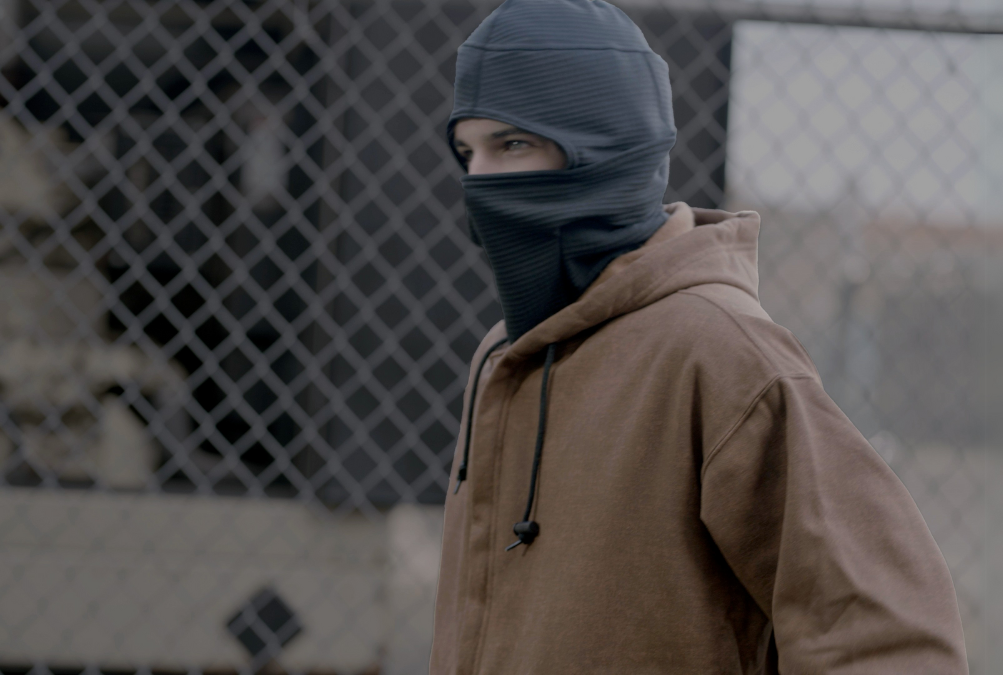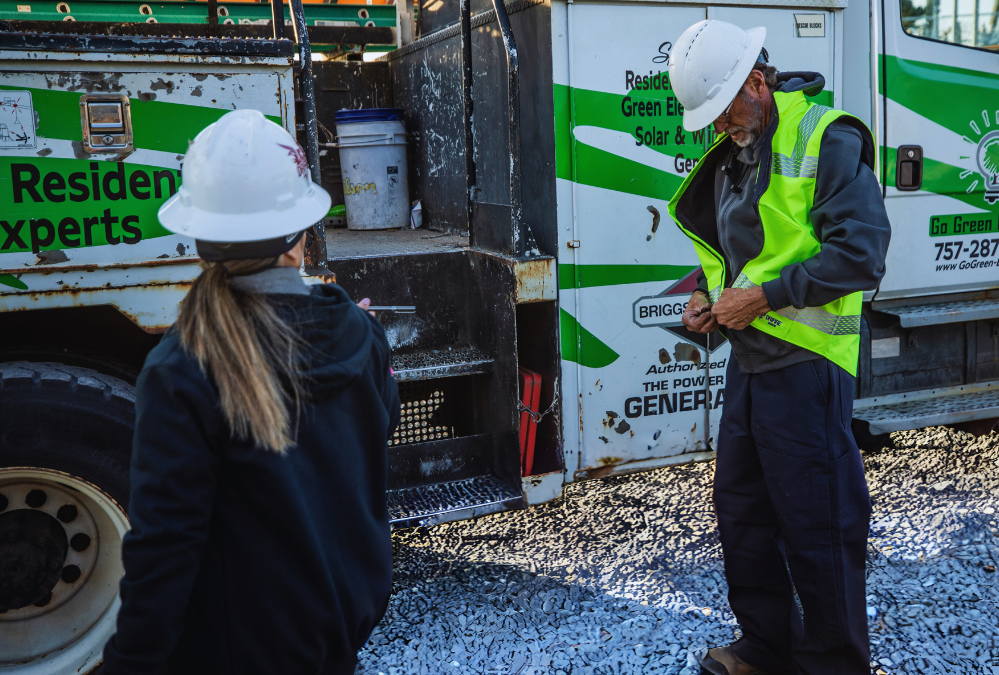
FR Clothing and Winter Layering Systems: The Hidden Risks of Overheating in Cold Environments
Winter conditions present a unique challenge for workers in tough environments. The cold pushes many to pile on extra layers to stay warm, but that can lead to a dangerous problem: overheating. This hidden risk is often overlooked, especially when workers are wearing flame-resistant (FR) gear. Overheating in cold weather doesn’t just cause discomfort; it leads to sweat-soaked clothing, faster fatigue, and a reduced ability to respond quickly in emergencies. To stay safe, choosing the right layers is essential. In this post, we’ll dive into the risks of over-layering, how to layer effectively, and why having the right FR gear is crucial, not only for protection but also for keeping workers comfortable in extreme temperatures.

Why Cold Weather Can Lead to Overheating
Workers in cold environments face a natural urge to pile on layers. When the body feels cold, the instinct is to trap as much heat as possible. But this can backfire, especially for those doing hard physical labor.
Physical Activity and Body Heat
As workers exert themselves, their bodies generate heat. Combine that with too many layers, and their core temperature rises quickly. The more they move, the more heat gets trapped between layers, causing sweat to build up. This not only leads to discomfort but also increases the risk of heat exhaustion, which can impair judgment and reaction time in hazardous environments.
Sweat and Overheating
Moisture buildup inside clothing becomes a real problem in cold weather. Workers may think they’re staying warm, but sweat trapped in layers can lead to discomfort and overheating. Once they cool down, the sweat-soaked clothes can chill them rapidly, which increases the risk of hypothermia.
The FR Clothing Dilemma
Unlike regular clothing, FR gear can’t just be removed when workers get too hot. It must stay on for protection. This makes choosing the right kind of FR clothing even more important, especially in cold environments. The wrong gear can leave workers in a dangerous cycle of overheating and cooling down too quickly.
In high-risk environments, choosing the wrong gear can put workers in serious danger. Fortunately, modern fabrics are designed to tackle these challenges effectively.
Importance of Breathable, Moisture-Wicking FR Layers
Layering for cold weather is all about striking the right balance between warmth and moisture control.
Moisture-Wicking Technology
Moisture-wicking fabrics are designed to manage sweat by drawing it away from the skin. These materials create a pathway for sweat to move to the outer surface of the fabric, where it evaporates, keeping the inner layer dry and helping regulate body temperature. This technology, long used by leading athletic brands to keep athletes dry during intense activity, is now applied in FR gear to keep workers comfortable in challenging conditions.
Breathable Fabrics
In addition to wicking moisture, FR fabrics need to be breathable to allow excess heat to escape. This is especially important during physically demanding tasks, where body heat production increases significantly. Without proper ventilation, internal temperatures can rise quickly, leading to overheating. Breathable fabrics help release heat rather than trap it, ensuring that workers stay comfortable and safe.
The right breathable gear can be the difference between a productive workday and one filled with discomfort, dehydration, or worse. While understanding the benefits of these advanced fabrics is crucial, knowing how to layer them properly is key to keeping workers both safe and comfortable in extreme conditions.

Best Practices for Layering FR in Cold Environments
Layering Arc-Rated Clothing
When layering arc-rated garments, the total protection level often exceeds the simple sum of their individual Arc Thermal Protective Values (ATPV). This is because of the air gap that naturally forms between the layers, acting as an additional insulating barrier against heat and energy. This phenomenon enhances the overall protective performance of the system. Essentially, the air trapped between layers absorbs and dissipates some of the thermal energy during an arc flash event, providing extra protection that wouldn’t be achieved with a single thick garment. However, the combined protection is not as simple as adding up the individual arc ratings of each garment. It’s critical to recognize that you must perform a layered arc test to accurately measure the protection of a clothing system. In most cases a layered system will exceed the sum of the individual arc ratings but not always. Therefore, properly testing the garment combination is essential.
The interaction between different fabrics and how they respond together under arc flash conditions can vary. For instance, if the outer layer ignites or fails under the intense heat of an arc flash, the protective benefits of the inner layers may be compromised. That’s why certified testing of specific layered systems is essential to ensure they achieve the desired ATPV and perform as expected in real-world scenarios.
Learn more about layering arc-rated clothing here: https://www.thinknsa.com/drifire-industrial/resources/articles/arc-flash-layering-explained-comfort-and-compliance/
Layering in Cold Environments
Layering is an essential technique for staying warm, but it requires careful planning to avoid overheating. Let’s break down how to properly layer to maximize both warmth and safety.
Base Layer: Start with a moisture-wicking FR base layer. This is the layer closest to the skin, and it plays the most important role in keeping sweat away.
View DRIFIRE Base Layer Options
Mid-Layer: The mid-layer provides warmth but should also be breathable. It should insulate the body without trapping heat, allowing workers to maintain a comfortable temperature as they move.
View DRIFIRE Knit Shirts, Work Shirts, and Sweatshirt Options
Outer Layer: An outer layer should protect against wind, cold, and moisture. But it shouldn’t be too bulky or restrictive. A good outer layer will keep workers shielded from the elements while allowing the layers underneath to do their job.
View DRIFIRE Outerwear Options
Layer Adjustments: It’s important to adjust layers based on the activity level. For more intense work, remove or swap layers to prevent overheating. Conversely, for less strenuous tasks or when the weather worsens, add a layer for extra warmth.
With these best practices in mind, it’s clear that not all FR gear is created equal. Let's look at how DRIFIRE products are designed to tackle these exact layering challenges.

How DRIFIRE FR Gear Addresses These Issues
At DRIFIRE, we understand the challenges of cold-weather work. Our FR gear is designed to tackle these exact issues, providing protection without the risks of overheating. Here’s how our products help:
Moisture-Wicking Technology: Our advanced moisture-wicking fabrics keep sweat away from the skin, reducing overheating and keeping workers dry.
Inherent Flame Resistance: DRIFIRE’s FR protection is built into the fabric itself, ensuring it won’t wash out or wear away. This means long-lasting protection, no matter how tough the conditions get.
Comfort and Performance: We know that mobility matters. That’s why our gear is lightweight yet durable, giving workers the freedom to move without feeling weighed down by their clothing.
Proven in Extreme Conditions: Our gear has been battlefield-tested and proven to perform in extreme conditions, whether it’s cold, heat, or anything in between.
Cold environments present unique challenges, but overheating doesn’t have to be one of them. With the right FR gear and smart layering practices, workers can stay warm, safe, and protected. DRIFIRE’s moisture-wicking, flame-resistant clothing offers the perfect solution, keeping workers comfortable without sacrificing the safety they need.
Now is the time to take action. Don’t let outdated gear put your workers at risk. Upgrade to DRIFIRE's advanced FR gear and give your team the protection they need to stay safe, dry, and comfortable.

Stay in the loop.
Sign up for our emails to be the first to know about exclusive product offerings
and all things DRIFIRE.










